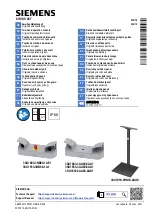
2
Power
To power your Noise Engineering module, turn off your case. Plug
one end of your ribbon cable into your power board so that the red
stripe on the ribbon cable is aligned to the side that says -12v and
each pin on the power header is plugged into the connector on the
ribbon. Make sure no pins are overhanging the connector! If they
are, unplug it and realign.
Line up the red stripe on the ribbon cable so that it matches the
white stripe and/or -12v indication on the board and plug in the
connector.
Screw your module into your case BEFORE powering on the
module. You risk bumping the module’s PCB against something
metallic and damaging it if it’s not properly secured when powered
on.
You should be good to go if you followed these instructions. Now
go make some noise!
A final note. Some modules have other headers -- they may have
a different number of pins or may say NOT POWER. In general,
unless a manual tells you otherwise, DO NOT CONNECT THOSE
TO POWER.
Warranty
Noise Engineering backs all our products with a product warranty: we guarantee our
products to be free from manufacturing defects (materials or workmanship) for one year
from the date a new module is purchased from Noise Engineering or an authorized
retailer (receipt or invoice required). The cost of shipping to Noise Engineering is paid
by the user. Modules requiring warranty repair will either be repaired or replaced at
Noise Engineering's discretion. If you believe you have a product that has a defect that
is out of warranty, please contact us and we will work with you.
This warranty does not cover damage due to improper handling, storage, use, or abuse,
modifications, or improper power or other voltage application.
All returns must be coordinated through Noise Engineering; returns without a Return
Authorization will be refused and returned to sender.
Please contact us for the current rate and more information for repairs for modules that
are not covered by our warranty.

















![Drolo Stamme[n] Manual preview](http://thumbs.mh-extra.com/thumbs/drolo/stamme-n/stamme-n_manual_2532713-1.webp)






